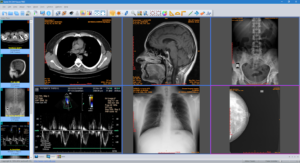Unlike the old days when health practitioners used to infill ultrasound reports manually, currently, there is an emerging technology that records, encodes, stores and presents ultrasound data automatically in documents known as structured reports. While these systems has not been adopted and supported across the board all around the globe, it comes with a wide range of benefits which can help speed up reporting while saving money and improving quality. This piece seeks to discuss DICOM (Digital Imaging and Communications in Medicine) Structured Report (SR) and outline its benefits to the health care industry.

What is Structured Reporting?
Structured reporting is a standard-based documentation system that allows storage, access, and comparison of similar data elements obtained in digital imaging/ ultrasound. A DICOM SR is a document that is stored and transmitted digitally, and it features text links to additional data in the form of waveforms, images, and temporal or spatial coordinates. This document uses coded information that is structured in a way that it bypasses local definitions and beats all language barriers.
According to Meir H. Scheinfeld, a lead author, MD, Radiologist at Montefiore Medical Center, it is normal phenomena for errors to arise during transmission of ultrasound readings into radiology reports due to hand-written worksheets, dictation or faults in the images themselves. To eradicate these errors and reduce the time spent checking and editing these reports, integrated and responsive software that can auto-fill ultrasound measurements with precision and clarity is imperative.
Want to understand how structured reports work in an integrated computer system? Schedule a demonstration with the SepStream EMR/RIS/PACS™ Solutions. This powerful software uses innovative technology to streamline health care operations, provide a prompt and measurable return on investment, as well as reduce costs, improve revenue and enhance maximum reimbursements.
Benefits of Ultrasound Structured Reports
Accurate Coding of Diagnosis
While the plain text report demands that professional looks for hints to aid them in selecting the right codes to give a diagnosis, a structured statement is accurate and straightforward since the software automatically finds the nodes and determines the most appropriate diagnosis.
Quality Assurance
Standardization is one of the quality improvements that results from SR. Templates used in structured reports offer a checklist that asserts that all the relevant items are addressed.It also prevents ambiguity and allows physicians to compare disease states and treatments, thereby allowing them to offer the most appropriate care.
Information Consistency
Since the information contained in the SR is copied directly from the original image and stored in coded form, it is correct and consistent. Physicians can compare study information with patient’s data with great certainty.
Efficient Data Mining
Every piece of information in an SR is represented in the form of a code, and it features a value that can be processed and identified by a software algorithm. This enables the automatic search of information which is useful in statistical analysis, clinical trials, and research.The inclusion of imaging also broadens the scope of the information available.
Better Communication
Since structured reports are concise and thorough, they are easy to read and comprehend, especially when the essential elements are well highlighted. This allows excellent communication between physicians, radiologists, and patients.
Improved Report Turnaround
Typically, the interpretation process involves three steps; dictation, transcription, and verification, all of which are embodied with other sub-processes that make the turnaround slower. However, with a structured report, the interpretation process can bypass the transcription step resulting in a faster turnaround. This means that radiologists can obtain and verify the reports in just a single step.Moreover, structured data involves less typing time, it is more reliable than the speech recognition system, and typing errors are highly unlikely.
Scalable Solution for Today’s health care Demands
The ultrasound-structured reports have been developed to satisfy the needs of radiology practices by allowing the storage, transmission, and retrieval of information more efficiently and in a scalable manner. An integrated system that handles the SR can be used in a variety of organizations from a single office to complex health care facilities, and the continuous innovation can help meet the changing health care needs.
At SepStream EMR/RIS/PACS™ Solutions, we can seamlessly integrate our software to your institution’s existing modalities and DICOM appliances, consequently helping you elevate diagnostic accuracy, improve turnaround time, and produce precise and well-organized reports. Our system will also help you reduce errors, lower the overall cost and achieve better management.